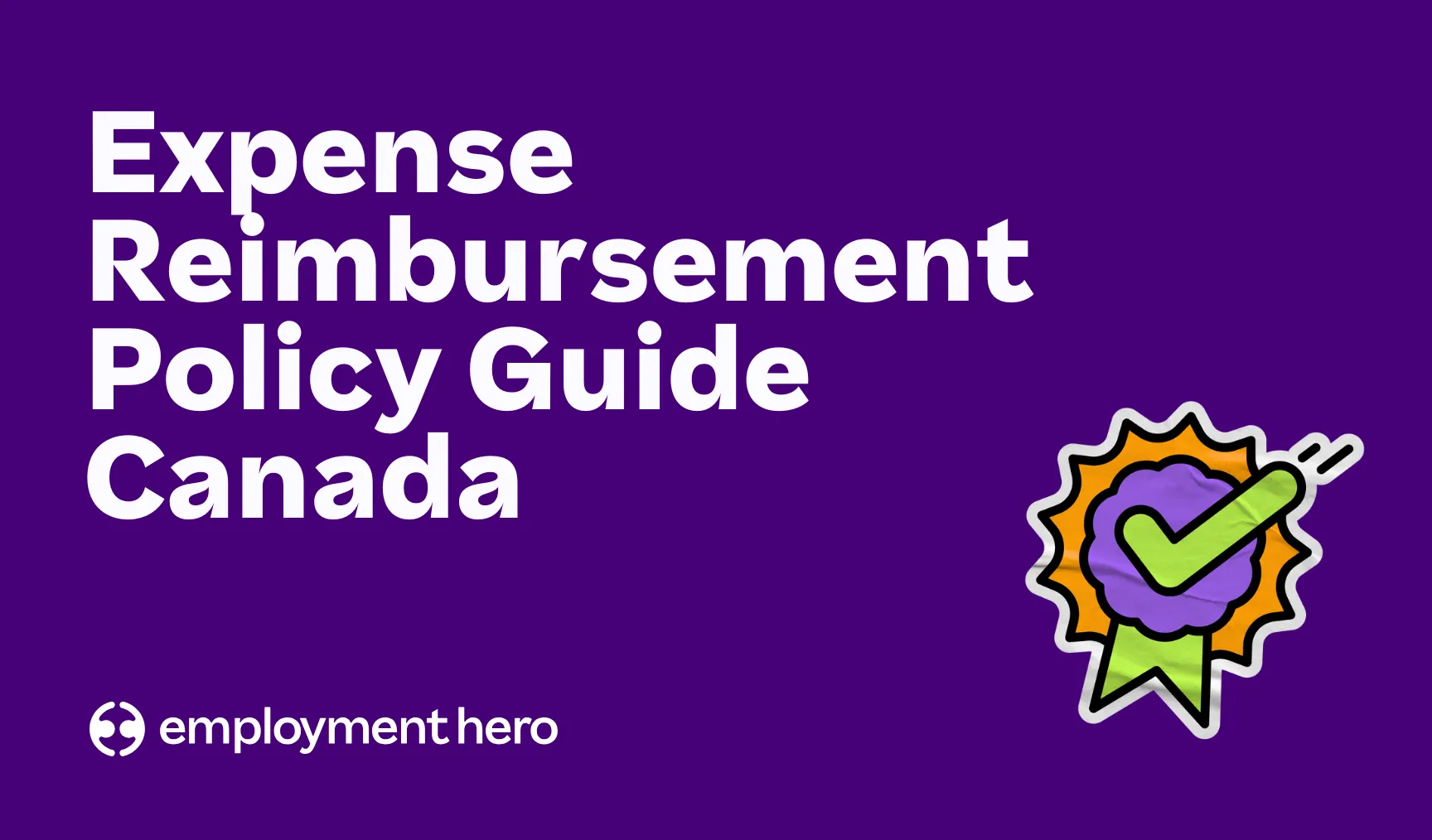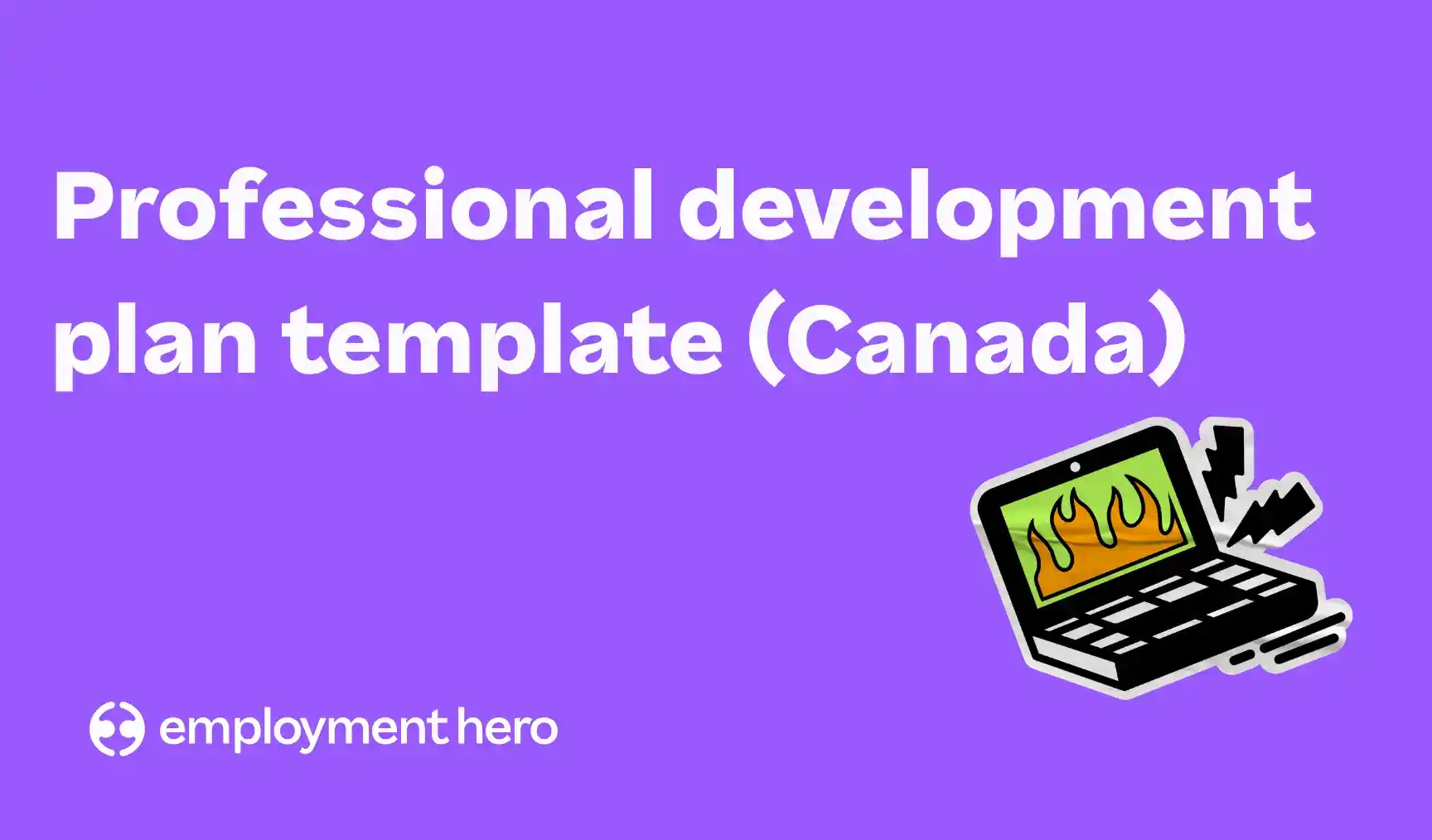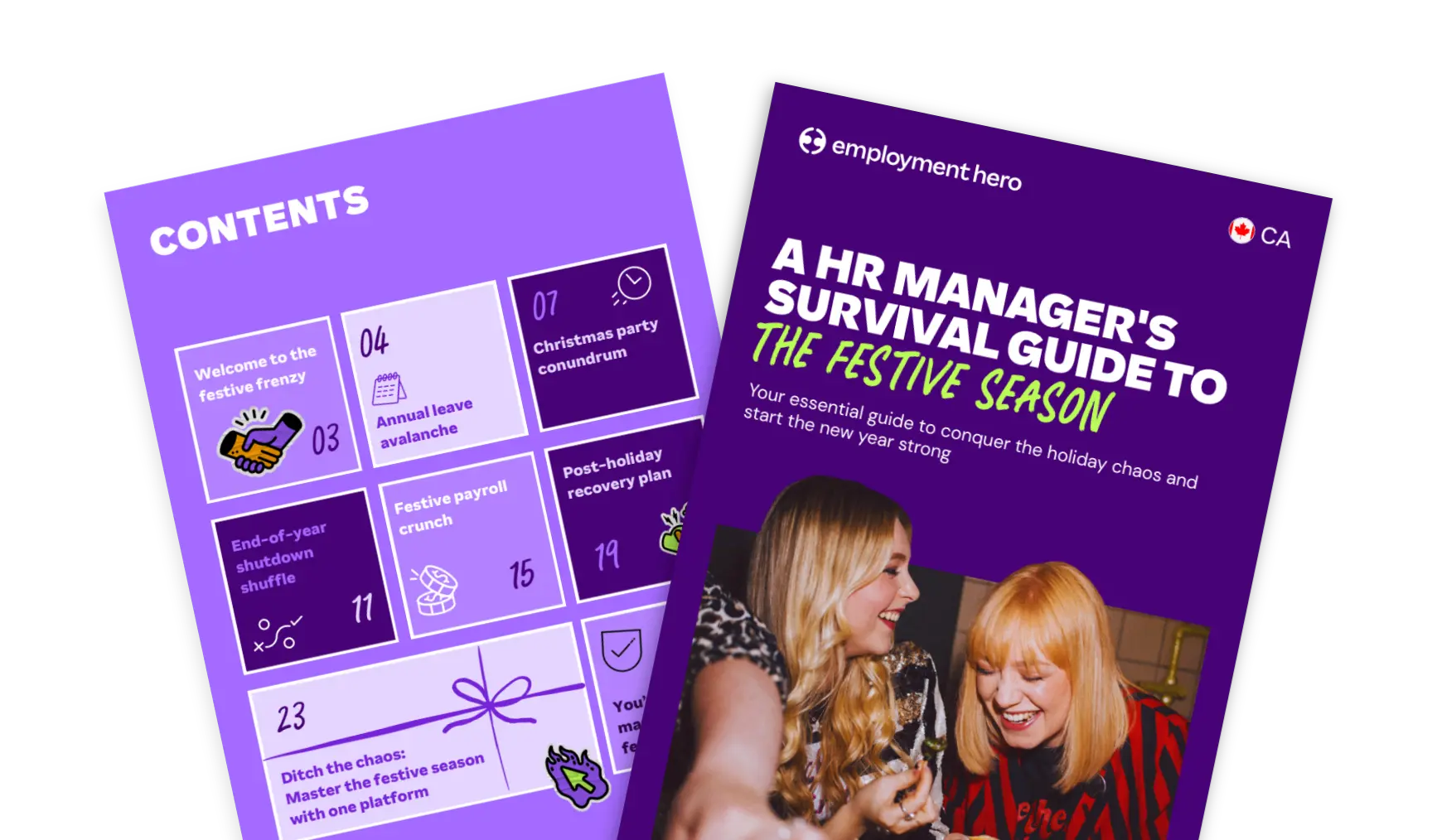Employee onboarding Canada: How to set up the first 90 days for success
Published
Employee onboarding Canada: How to set up the first 90 days for success
Published
Someone new joining your team? That’s a win worth celebrating. But you already know this: signing the contract isn’t the finish line—it’s the starting point. Onboarding is your secret weapon to transform fresh talent into your next high performing employee. Nail it, and you’ll spark loyalty, fast growth and a team that punches well above its weight.

What is in this onboarding guide?
Think of this as your no-fluff manual to onboarding like a pro. You’ll get:
- A step-by-step plan for every stage of onboarding
- Checklists you’ll actually want to use
- Compliance tips written for Canadian SMBs (no legal headaches here)
- A 30-60-90 day framework that sets up wins for everyone
Forget boring induction days. We’re talking about onboarding that gets people excited to show up, ready to crush it from day one.
Before your new employee starts
Want your new hire to show up buzzing with excitement on day one? You need to make sure you pay as much attention to preparing as you do to their first day. No one wants first impressions tainted by chasing signatures and finding the Wi-Fi password. You’ll want to:
Send a personal welcome (don’t wait for the first day):
- A quick video intro from you or the team beats a bland email. Show them personality from the outset.
- Share a team “fun facts” sheet, spotlighting inside jokes and must-know quirks—it humanizes your culture.
Send them their joining kit before day one:
- Sort gear early: laptop, phone, headphones, login details. Confirm delivery or pickup so there are zero tech disasters.
- Include a Welcome Pack that’s more than just branded pens. Think local snack packs or something quirky that matches your vibe.
Handle compliance like a pro:
- Email out contracts and forms for e-signing well in advance.
- Map out exactly which forms are needed for CRA, provincial standards, privacy and any must-have policies. Attach links or reference guides.
Set clear first-day expectations:
- Send a mini “First Day Blueprint” outlining what time to start, where to go (or which Zoom / Teams link to use), what to expect and who will greet them.
- Share the Week 1 schedule and agenda—ambiguity is the enemy of confidence.
Rally your team behind the welcome:
- Announce their arrival internally—mention their background and what they’ll tackle first. Invite the crew to send a welcome ping.
Go the extra mile here, and you transform anxiety into anticipation. You’re not just prepping files, you’re building trust before day one. Get the grunt work done before they walk in and you’ve cleared the runway for their first real day.
Worried about excessive paperwork? Employment Hero Onboarding Software’s got your back. Ditch manual admin work, switch to automated and paperless processes that manage your team, payroll and engagement. Say goodbye to paper – for good.
You’ve set the stage, now it’s time to own the welcome.
When your new employee starts
Day one shouldn’t be about staring at a screen, filling out more forms. Hit them with all the essentials: who’s who, how your tools work and what success actually looks like around here. Your goal? Make them feel like they’ve landed exactly where they belong.
Roll out the welcome wagon:
- Greet them personally (in person or virtually) with energy. Let your enthusiasm set the tone.
- Do a “First Day Tour” of the essentials: office (or digital workspace), kitchen, restrooms, virtual meeting spots, FAQs about Slack/Teams etiquette.
Crack the introductions wide open:
- Go beyond names and job titles. Set up a round of rapid-fire team intros, quirky icebreakers or two-truths-and-a-lie games.
- Pair them with an onboarding buddy or mentor. This person’s their lifeline for everything from tech to team lunch hacks.
Systems, access, and the lay of the land:
- Walk through all key systems: email, HR platform, chat tools, important shared drives, project management tools.
- Run a tech check—confirm everything’s up and running before they’re left floundering.
Give them an early win:
- Assign a simple but meaningful task they can ace on Day 1 or 2. Maybe it’s sharing a short intro, joining a team standup or reviewing a client brief. Small victories build confidence.
Set expectations but keep it real:
- Map out what the first week will look like. Lay out goals, but reassure them that mistakes are part of learning. Emphasize that questions—not silence—are gold.
Check out our onboarding checklist that walks you through how you can set up new employees for success from day 1.
After your new employee starts
Onboarding is a journey—not a checklist you ditch after week one. Keep the momentum rolling, and you’ll turn a promising hire into a powerhouse. Let’s break it down.
Within their first week
Settle them in. Low stakes, high welcome. Coach them through the basics, show them how to find answers and hook them up with a buddy who gets it. Create space for questions—the weird, the wonderful and everything in between. Let them breathe, connect and start to click with the culture.
- Overcommunicate, then communicate some more. Daily check-ins for Week 1—doesn’t matter if they’re five minutes long. Gauge how they’re tracking and what’s confusing.
- Turn their buddy into their go-to. The buddy should check in, steer them through trickier tasks, and invite them to join casual team calls.
- Expose them to real workflows. Shadow meetings, let them soak up how your team interacts and introduce them to cross-functional partners early.
- Give context, not just content. Share why you do things your way—origin stories, customer examples or even the times things went sideways (and how you recovered).
- Invite feedback right away. Let them suggest improvements, flag friction points and share fresh perspectives. You’ll win innovation and buy-in.

Within their first month
Now’s the time for a remix. Shift gears from welcome to impact. Start setting meaningful goals together. Don’t just tell—listen. This is your chance to support them, throw feedback their way and prove you’re invested in what they bring to the table. It’s all about alignment: what matters to them, what success looks like for you and how you’ll both get there.
- Build personalized success metrics. Collaborate on a mini 30-day plan: What does “nailing it” look like for both of you? Make sure it’s crystal clear.
- Open up about the business. Share key results, wins and even missteps. Draw clear lines between their work and the company’s big-picture mission.
- Regular feedback cadences. Schedule feedback loops—maybe every week or bi-weekly. Keep the door wide open for candid, direct conversation.
- Early performance challenges. Encourage them to start taking the lead on a small ongoing task or project that matches their strengths.
- Expand their network. Set up coffee chats with leaders in other teams or departments so they see the wider business and its moving parts.
- Celebrate small wins. Shout out quick wins to the team, acknowledging their contribution from the get-go.
Month 3
Three months in, the training wheels are off. They know the ropes; it’s time to accelerate. This is where you dig into what’s next with formal reviews, honest feedback and a plan that isn’t just about the job—it’s about their bigger ambitions. Talk about the future. Challenge them. Show you’ve got their back and they’ll show you what’s possible.
- Run a real-talk probation review. Invite direct, honest feedback from both sides. Celebrate wins but call out what needs work—no sugar-coating, just partnership.
- Start mapping out growth. What’s next and what skills do they want to master? Jointly craft a roadmap for development and new responsibilities over the next quarter.
- Hand them the reins (where it fits). Pass along one meaty project or ownership over a process. Show them their impact and trust.
- Amps on engagement. Ask: Are they challenged? Supported? Energized? If not, what’s missing?
- Keep fuelling connections. Encourage them to contribute ideas, challenge the status quo and drive small changes—even if that means testing out something unconventional.
- Revisit and refresh goals. Growth is not static. Check that their goals are still ambitious and aligned with the trajectory of the team.
We’ve gone over a solid 90-day plan, but that’s not where your planning should end. The rest of the year counts just as much. Make sure you plan for day 90 onwards, so your new hire has a clear path to success.
Months 5–6
Forget coasting. Midway through the first year is your chance to hand over some serious responsibility. Empower them to own a project, stretch outside their comfort zone and make a real dent. Check in—really check in. Ask if they’re excited, overwhelmed or ready for more. Adjust. Improve. Keep raising the bar, together.
- No time for coasting. This is where they take ownership and step up.
- Delegate significant projects. Empower them to make a real impact, not just busywork.
- Encourage growth. Push them out of their comfort zone. That’s where progress lives.
- Conduct deep check-ins. Understand their excitement, challenges and aspirations. Dig in.
- Adjust and elevate. Continuously raise the bar, together.
Month 12
Hit the one-year mark? Time to celebrate—not just with cake, but with honest reflection and big-picture dreaming. Review the wins, tackle the not-so-greats and talk about next steps. Build a path forward that actually excites them. Recognize their journey. Make sure every year isn’t just more of the same—it’s a launchpad for what’s next.
- Celebrate the milestone. More than cake, it’s about acknowledging profound impact and growth.
- Reflect honestly. Review wins, confront challenges. No hiding.
- Chart the future. Discuss next steps, build an exciting growth path that truly energizes them.
- Acknowledge their journey. Recognize their contributions, their evolution, their grit.
- Launch into what’s next. Ensure each year is a step forward, a bolder move, not just a repeat.
Ready to leave average onboarding in the dust? Our guide has you covered with all the tools and tips you need to make onboarding your superpower.
Remote employee onboarding considerations
Remote (or hybrid) onboarding? No, you’re not off the hook. Building connections from afar takes extra hustle. Book face time on video—even goofy intros count. Ship their tech ahead so they can hit the ground running. Use chat apps for fast feedback and small talk. Schedule regular check-ins, not just to bug them—but to show you care. Remote work shouldn’t mean remote culture. Keep them looped in and plugged into the team vibe, every step of the way.
Legal and compliance requirements during onboarding
Make sure you:
- Collect that Social Insurance Number (SIN) pronto
- Have employees fill out federal and provincial tax forms (TD1 and friends)
- Track to your province’s ESA standards
- Run a real health and safety orientation (not just a PDF)
- Respect privacy—keep personal info safe, treat it like gold
Cover your bases now and keep those compliance headaches at bay—future you will thank you.
Employment Hero Onboarding Software empowers you to ditch manual processes and save time, maintain clear audit trails, manage employee certifications with ease and ultimately onboard with confidence.
Request a demo of the platform to explore how we can transform your employee onboarding experience to help your new hires hit the ground running.
Creating an inclusive onboarding experience
You can’t build a strong team if new hires feel like outsiders. Walk the talk on inclusion—always. From the get-go, use language that says “you belong here.” Ask about accessibility needs (and actually deliver). Highlight diversity and inclusion groups and let people know their voice matters. Inclusive onboarding isn’t a checkbox. It’s how you make everyone feel at home—no matter who they are or where they come from.
Measuring onboarding success and employee satisfaction
Wondering if your onboarding is working? Here’s your reality check: ask. Simple surveys at the 30, 60 and 90-day marks open the door to honest feedback. Track early performance and engagement stats; don’t just guess. Are people thriving or just surviving? Use that data to level up your onboarding again and again—constant improvement is how you stay one step ahead.
Common onboarding mistakes to avoid
Don’t trip at the starting line. Watch out for these classic fails:
- Firehosing new hires with info (they won’t remember half of it)
- Skipping the “why” and getting lost in endless checklists
- Forgetting introductions—awkward!
- Not explaining the big picture (roles, goals, impact)
- Leaving things to chance. Structure wins every time
Avoid these missteps and you’ll already be ahead of most Canadian companies.
Onboarding for different role types and levels
Cookie-cutter onboarding won’t cut it. Entry-level hires need extra support and side-by-side learning. Senior hires? Hand them strategy and expect bold questions. Contractors or seasonal staff? Give them targeted info without wasting time on what’s not relevant—but always make them feel included. Treat people like individuals, not just roles.
How onboarding connects to long-term retention
Here’s the deal: onboarding and retention are joined at the hip. If people feel seen, supported and challenged from day one, why would they leave? Strong onboarding means less churn, better morale and a squad that takes your business further. Want a team that sticks, grows and wins? Start strong, stay strong.
Download the full onboarding new hires guide
You’re not just onboarding—you’re starting a movement. Equip your team, champion change and make work matter. Download a PDF version of this onboarding guide to share around internally and turn your next new hire into your next big success story.
To download the guide, we just need a few quick details.
Related Resources
-
 Read more: Expense Reimbursement Policy Guide Canada
Read more: Expense Reimbursement Policy Guide CanadaExpense Reimbursement Policy Guide Canada
Download a free expense reimbursement policy guide for Canadian businesses. Learn how to create a clear, compliant policy for managing…
-
 Read more: The professional development plan Canada’s top teams use
Read more: The professional development plan Canada’s top teams useThe professional development plan Canada’s top teams use
Download a free professional development plan template for Canadian businesses. Help employees set goals, track progress and achieve career growth.
-
 Read more: HR Managers: Don’t just survive the festive season, master it
Read more: HR Managers: Don’t just survive the festive season, master itHR Managers: Don’t just survive the festive season, master it
Make year-end easier: manage time-off, payroll, parties and shutdowns with confidence. Get practical tips for Canadian SMBs. Download the free…


















